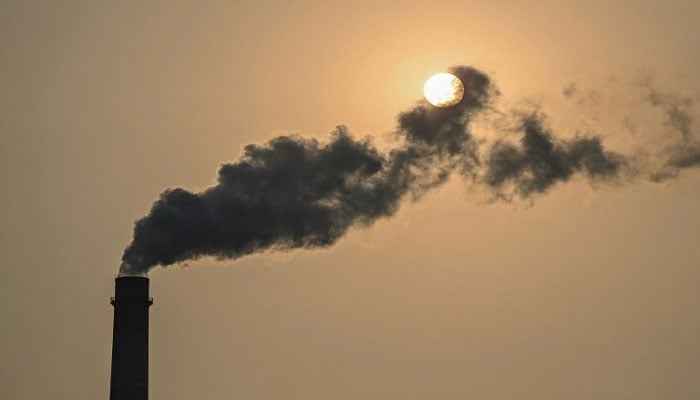Our Terms & Conditions | Our Privacy Policy
Long-term solution to counter air pollution stressed
Air pollution has long been linked to cardiovascular and respiratory diseases, but new studies add to evidence that it also affects mental health. — AFP/File
LAHORE:The Punjab government should go for long-term solution to counter air pollution instead of going after short term measures. Pakistan Air Quality experts group floated this suggestion in a press statement issued here on Wednesday.
The group utilised government data and source apportionment studies to recommend the closures of brick kilns and smelters, and halting entry of unnecessary heavy trucks into cities on polluted days, which could bring relief to citizens when pollution levels are forecasted to be higher.
A similar, pre-established policy for closures was used in cities like Beijing and New Delhi, preventing the worst possible scenario. However, these measures were ad-hoc and implemented for a few days, and pollution levels have crept up again to very unhealthy or hazardous levels.
The group had also previously highlighted that the Smog Mitigation Plan of the Punjab government does not adequately address key sources of pollution and proposed actions should be backed by evidence.
On December 14, 2024, the Punjab government announced that it has installed a ‘Smog Clean tower’ similar to smog-free towers in China and India. Details released further state that the tower has been installed in Lahore’s Mehmood Booti area and set up in collaboration with National University of Science and Technology (NUST).
Smog-free towers in China and India have been shut down as they are an impractical method to reduce pollution. Based on an expert assessment of the tower in New Delhi, it was estimated that 47,000 such towers were needed to reduce PM2.5 to healthy levels.
In the case of Lahore, which has relatively lesser sources of pollution, the city will need 20,000 such towers. The energy consumed to run such towers makes them an extremely costly and inefficient measure, more expensive than controlling pollution at point sources, such as industry stack emissions, kilns and vehicle tailpipes.
Previously, ‘articial rain’ had also been promoted as a possible solution, however, as was observed this year, this approach is ineffective in unfavourable meteorological conditions and not a sustainable intervention.
Furthermore, analysis of AQI reports from Punjab Environment Protection Agency (EPA) showed that there is negligible impact from the tower installed in Mehmood Booti area. Data taken from EPA monitoring stations installed in Mehmood Booti area for the period between December 15 to 31, 2024 shows that the AQI levels in the area remained above Lahore city-level average AQI for 9 out of 14 days of available data while it was lower in other areas of the city where no intervention has been deployed. This suggested that AQI levels have not been improved at all and variations are due to local activities and meteorology.
Given the extremely detrimental public health and ecosystem impacts of air pollution, governments must prioritise interventions that are effective and provide significant returns. The Punjab govt should use research and expert knowledge to conduct benchmarking of its existing plans, and then further implement interventions which have been successful in other similar economic and governance contexts.
Images are for reference only.Images and contents gathered automatic from google or 3rd party sources.All rights on the images and contents are with their legal original owners.



Comments are closed.